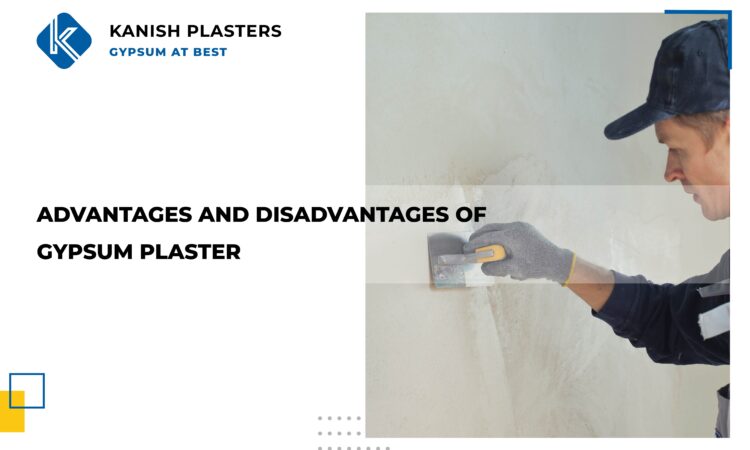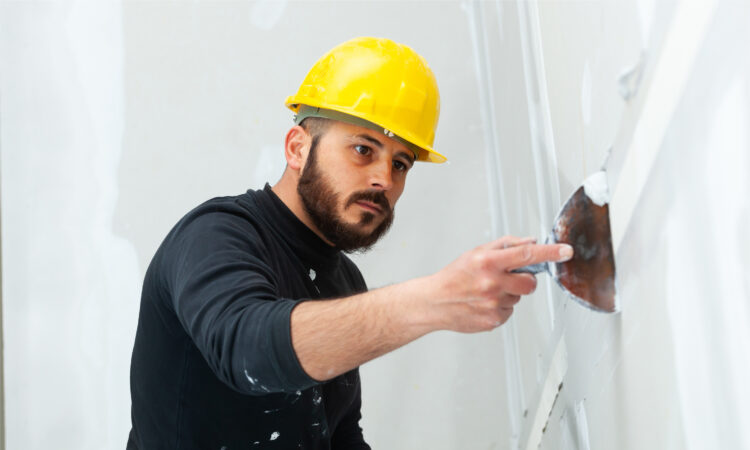Advantages and Disadvantages of Gypsum Plasters
What is plastering? What is the role of a plaster?
Plastering in construction refers to the process of covering walls and uneven surfaces after masonry work so as to achieve a smooth finish and even surface. This protects the wall from damages, wear and tear and increases the durability of the surface.
Plasters are one of the oldest construction materials that function as a protective agent and a decorative coating that seals together the building materials, adds strength to the building, increases the durability and aesthetics of the masonry walls and concrete surfaces.
What is a gypsum plaster?
The chemical composition of Gypsum is CaSO4.2H2O (Calcium sulfate dihydrate), and is older than cement and sand. It is a naturally occurring mineral deposited from the sea and lake water and is found in abundance at the layers of sedimentary rock.
Gypsum plaster is obtained as a dry powder from partial or complete dehydration of gypsum. Heating forces the water in gypsum to evaporate and produces a fine powder. When this powder is then mixed with water and applied over bricks, walls or cement, it hardens and re-forms to form a smooth surface called gypsum plaster.
Gypsum plastering has received widespread acceptance and adoption as a construction material in the last decade and has been revolutionizing the Indian construction industry. The miraculous properties of gypsum plaster has enabled, in reality, the construction of greener, cheaper and faster buildings.
What are the advantages of gypsum plastering?
There is a paradigm shift in the preferences of building contractors and construction companies from using cement plasters towards gypsum plaster due to the following reasons.
- Ease of application- It is very easy to apply gypsum plaster to a surface with bricks, blocks, etc. as they do not require a separate finishing.
- Produces a smooth surface- Gypsum plasters produce a smooth surface with levelled corners unlike other plasters like sand cement that result in cracks.
- Do not require putty- Walls plastered with Gypsum are paint-ready as they are smooth and do not require putty or whitewashing.
- No curing required- Unlike cement plasters that require water curing for 21 days to settle down, gypsum plasters do not require water curing and so saves 75% of construction time.
- Faster setting time- Gypsum plasters sets in 25-30 minutes and the gypsum plastered walls are paint-ready in 4 days when compared to cement plasters that require 15 days to settle. Gypsum plasters attain their inherent strength in 78 hours.
- Environmental-friendly- Unlike cement manufacturing that is a major source of carbon emissions, gypsum is a readily available, green and organic material.
- Fire resistance- Gypsum plasters are resistant to fire as by chemical composition gypsum contains nearly 21% of crystallized water. It remains inert below a temperature of 1200°C.
- Reduced consumption of resources- Gypsum plastering consumes lower amounts of water, electricity, fuel, and manpower than sand cement plasters and other plasters in the market.
- Excellent acoustic properties- Gypsum plasters provide sound insulation and prevent seepage of noise from outside. So gypsum plasters are apt for crowded places like hospitals, hotels, and workplaces.
- Lightweight construction material- Gypsum has a low density and higher compressive strength. This lowers 35% of plastering weight and thus increases the strength of high-rise buildings.
- Natural disinfectant and insect repellent- Gypsum acts as a natural disinfectant and protects the surfaces against bacteria, fungi, pests and insects.
- Low thermal conductivity- Gypsum plasters possess lower thermal conductivity and so saves electricity costs. It also increases workplace productivity.
- Decorative applications- As gypsum plasters can be molded into different shapes and forms, they can be used for decorative purposes.
- Reduces 20% of construction costs- Because gypsum plastering saves time and resources like water, electricity, fuel, etc., it saves up to 35 per sq. ft when compared to sand cement plastering
Disadvantages of gypsum plasters
- Gypsum plasters retain dampness and so are unfit to use in outside walls, or in other areas like bathrooms that are continuously wet.
- Because exposure to moisture or water reduces the strength of the plaster, they should be stored in dry platforms.
- Lower shelf life- Gypsum has a shelf life of 3-4 months but when stored with caution it can be extended up to 6 months.
Want to know more? Contact us Gypsum plastering company at [email protected]



